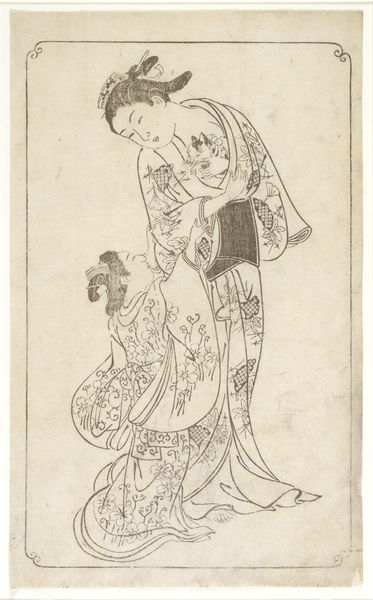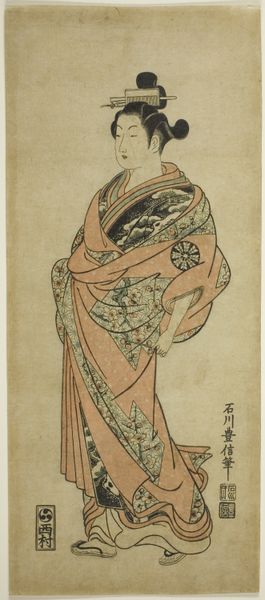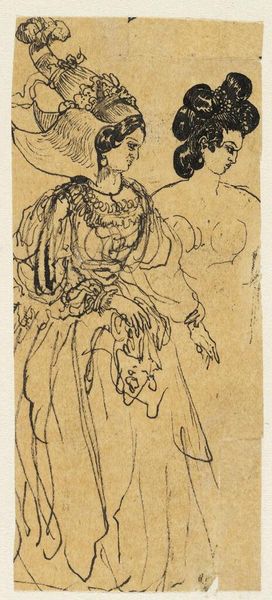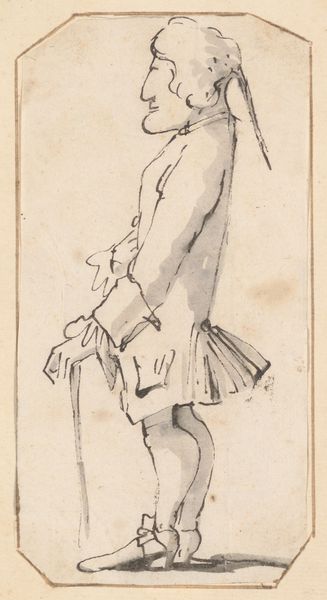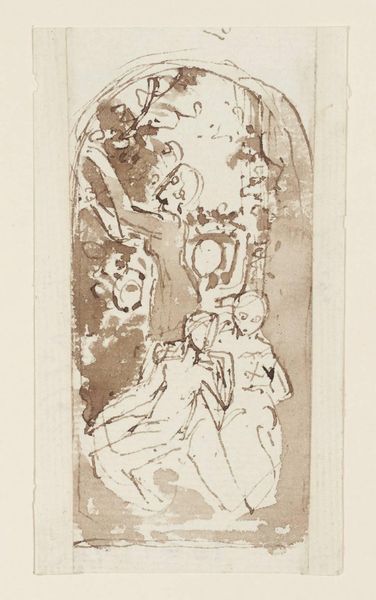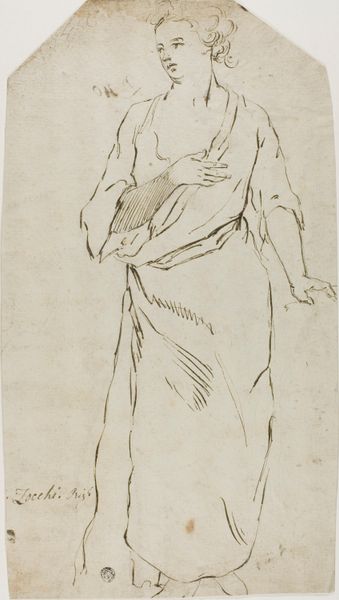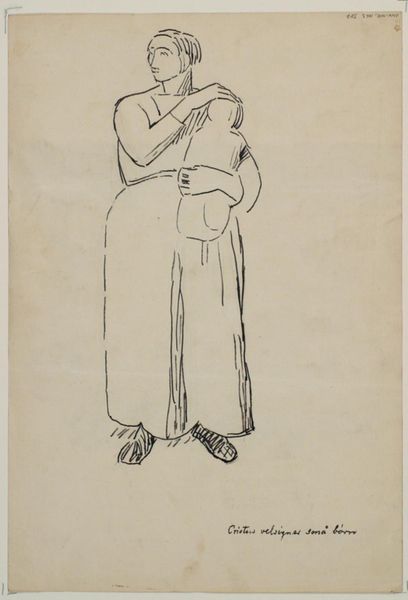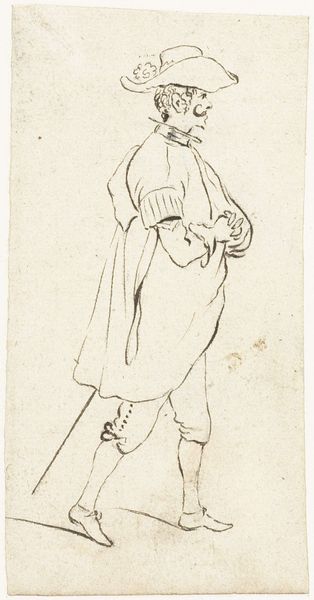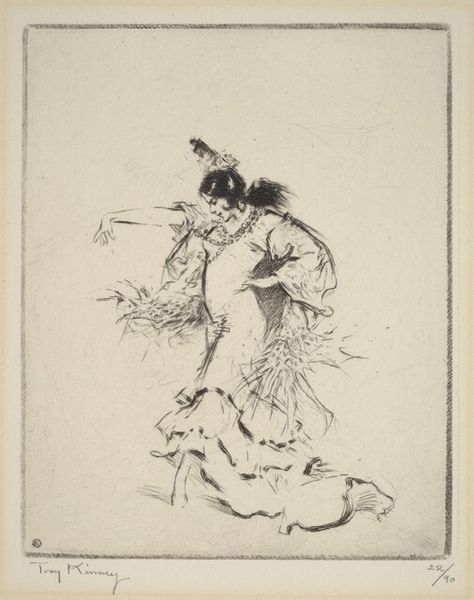
drawing, print, paper, ink-on-paper, ink
#
portrait
#
drawing
# print
#
asian-art
#
ukiyo-e
#
figuration
#
paper
#
ink-on-paper
#
ink
#
genre-painting
Dimensions: 9 1/2 x 5 7/8 in. (24.1 x 14.9 cm) (image)10 5/16 x 6 1/2 in. (26.2 x 16.5 cm) (plate)17 15/16 x 14 in. (45.5 x 35.5 cm) (mat)
Copyright: Public Domain
Curator: We’re looking at "Prostitute Walking" by Nishikawa Sukenobu, created around 1739. It’s an ink-on-paper print, part of the Ukiyo-e tradition. Editor: There’s something both stark and elegant about this figure, isn't there? The simplicity of the ink line allows the intricate patterns on her kimono to really come forward. Curator: The work speaks to the societal positioning of women, particularly in the floating world. The choice to portray a sex worker isn’t merely aesthetic, it is reflective of social realities and class structures of the period. It provokes a discourse around female labor and agency, or rather, the lack thereof. Editor: I agree; the linework itself seems to hint at this vulnerability, doesn't it? There's a fragility, almost a hesitance, to the strokes, especially around her face and hands. It gives her a kind of ephemeral presence. I wonder how this piece engages with visual semiotics through the use of line. Curator: Considering the Ukiyo-e tradition as a popular art form, disseminating through prints makes it inherently democratic. Her slightly averted gaze suggests a story of systemic oppression, while simultaneously offering a subtle form of defiance. She becomes an emblem for many disenfranchised populations of the time. Editor: I appreciate your interpretation, but from a formalist angle, it seems that the patterned texture covering the artwork can be viewed as a reflection on art itself, an investigation into pictorial space that, via semiotics, gives way to the overall structure of the artwork. The placement of figure versus ground, use of positive versus negative space is masterful. Curator: I think both of these elements—her individual circumstance and formal features like composition—can work together. The aesthetic value becomes intertwined with social commentary. Editor: Indeed, they're not mutually exclusive, are they? Ultimately, I believe that understanding an artwork can deepen by decoding it through close examination of form, not by dismissing historical and cultural implications. Curator: Likewise, formal observations without contextual framing can strip an artwork of its very purpose and human relevance. Editor: Food for thought, certainly. Thank you for this dialogue, it gave me some perspective to walk away with. Curator: Likewise. Thank you for engaging with a vision on the socio-historical.
Comments
No comments
Be the first to comment and join the conversation on the ultimate creative platform.
